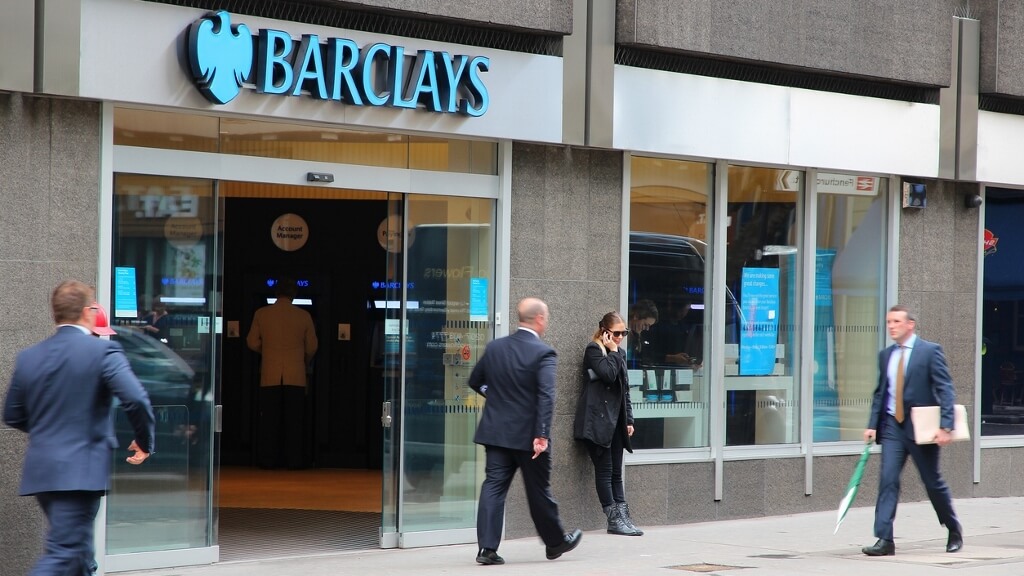Start-ups are smashing up the fintech scene, is this the beginning of the end of high street banks or can they fight back?
Can High Street Banks Contain The Fintech Revolution?
Start-ups are smashing up the fintech scene, is this the beginning of the end of high street banks or can they fight back?

Often, bankers complain about competition from technology startups that are not overseen by any governing body (yet). Why aren’t they regulated? The lack of regulation is why they move so fast / create products that we haven’t / attract millennials / whatever! It’s just not fair!
Competition isn’t fair.
Even still, why should a fintech startup that is not a bank or a credit union be regulated like a bank or a credit union? There are perhaps a hundred reasons why most fintech startups should not be considered and regulated as financial institutions.
The CFPB should oversee their interactions with consumers with the same fervor as financial institutions, but they should be regulated based on the exact services they provide, not based on a lazy grouping of “fintech startups.”
Presuming that the services provided by the fintech company are moral and fair and all that good stuff, the regulations should keep up with the era, just as they have in other countries around the world. Fintech companies should be allowed to provide aspects of banking services to businesses or consumers without being labeled a financial institution.
Uber has demonstrated its separation from taxi services, time and again, in courts all over the globe. The same could be said for aspects of financial services in the United States. We in America have our European brothers and sisters to thank for the model.
In 2009 (and later expanded in 2015), the European Union adopted the Payment Services Directive, a law that, among other things, increased competition in electronic payments by creating a “payment institution” license. It’s all part of creating a single, digital market that will simplify payments for consumers and businesses across Europe.
As a payment institution, a nonbank can supply nearly any type of electronic payment (including direct debit, credit cards, credit transfers, money remittance, mobile payments, etc.) to its customers across the 28 countries in the European Union.
Since 2009, many fintech startups in Europe, including Finland-based Holvi (later acquired by BBVA), have gotten their start via a payment institution license.
You don’t have to do so now, but in a quiet moment, ask yourself this question: “Why shouldn’t the OCC create a similar ‘lighter’ federal banking charter for fintech startups or nonbanks like Google, Apple, Amazon, or Facebook?” Don’t let “because it’s not fair” be the response your brain chooses.
Before you go thinking fintech companies won’t want to be pushed into the hornet’s nest of regulation, many of them are demanding such changes by the OCC and are even part of a lobbying effort called “Financial Innovation Now” to quickly evolve regulations in the United States. Financial Innovation Now consists of Amazon, Apple, Google, Intuit, and Paypal, etc.
Now, take a look at the number of users on Facebook and imagine how much good Facebook could do by extending banking services to the unbanked around the world. If you don’t want to compete against Facebook, sell or merge your FI today.
Uniform regulation went out the window with asset-size carve-outs in Dodd-Frank—you can’t have it both ways. Of course, the OCC should study why Dodd-Frank also did away with the Office of Thrift Supervision—specialized “light” charters might simply rehash prior mistakes.
ATM technology pushed branch efficiency forward and enabled the possibility for a bank to operate branches far cheaper than ever. It was only a decade or so before the legislation turned that possibility into reality.
Some banks had been using ATMs to automate processes in-branch, were prepared for Riegle-Neal (M&A, compliance, risk, etc.), and took advantage of the new law. Those banks, history has shown, achieved more logarithmic growth than the more exponential growth of those who did not.
Next, ask yourself if your institution is making investments (in human resources, cash, real estate, etc.) today that could be reprioritized to help your FI prepare to turn this into an opportunity.
Although some rest easy on their current sub-LIBOR funding source advantage over nonbanks, more prudent community bankers see that as a fairly weak dam that will soon break. The institutions who thrive over the next 10 years will tackle the “competing with nonbanks” question, now, with their executive team and their board.
Because the Real Problem Is Inaction
With shrinking margins, time is not on the side of the banker. Doing nothing is reckless.
Tradition, habit, and the challenges of organizational culture change across a number of humans in a variety of locations can all reinforce slothful dormancy.
There’s comfort in inactivity. When one’s industry is in transformation, one can easily hedgehog his way into obsolescence. Apathy and indecision can be comfortable and familiar, but, like the sirens’ song, things end rather awkwardly.
And if it’s not lethargy or inertia, it’s fear. Cloaked in a sexy phrase so the entire executive team can feel smarter while cowering, someone at the table mutters, reputational risk. Simply uttering the banker safe word quickly sniffs out whatever life, whatever dreams, whatever ember of transformation existed in the institution just six syllables prior.
Goes the refrain: if we do something new and it blows up, what will people think? Is it worth risking all of the consumer trust we’ve accumulated in our legendary, forty-thousand-year history?
Certainly “reputational risk” does exist—especially in the financial industry. I’m pushing here for a reason. Perhaps we can have our cake and eat it too?
Call It “Toe in the Water,” “MVP,” “Whateveryouwant,” Just Try Something
In his groundbreaking book The Lean Startup, Eric Ries first defined an MVP (Minimally Viable Product) as “that version of a new product that allows a team to collect the maximum amount of validated learning about customers with the least effort”.
Lean Principles can have immediate, profound impacts on any organization—especially community financial institutions.
Delivering the lightest (smallest, least feature-packed, cheapest, fastest, etc.) solution to a problem or set of problems, and, over time, iterating on it in response to feedback makes a lot of logical sense. You eat an elephant one bite at a time, right?
At its core, the adoption of lean principles (like MVP) gives you and your team the freedom and the permission to move. To experiment. To test modifications to processes, products, ideas—while also looking quite industrious and relevant to your accountholders, who have been conditioned to embrace MVP with smartphone app updates.
It can be difficult to remember this long ago, but the original iPhone didn’t come packed with every feature that mobile phone users said they needed. In fact, a very common feature of competitive phones at the time, “cut, copy, and paste,” was not found on iPhone until OS release 3.0, almost two years following the launch of iPhone.
When a banking executive frames his team’s problems as Fintech competition or regulation or reputational risk, all he’s doing is absolving his team of their sedentary sins, and perpetuating inclinations of stagnation.
The evolved community banker will take a page from the bible of many of his fintech competitors, and embrace transformation—one small step at a time.
This is an edited extract from Bankruption: How Community Banking Can Survive Fintech by John Waupsh (Wiley, 2016).
Thanks for signing up to Minutehack alerts.
Brilliant editorials heading your way soon.
Okay, Thanks!




